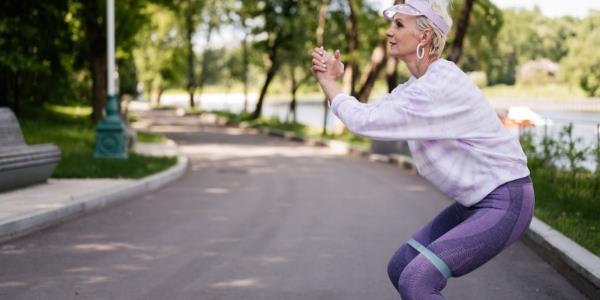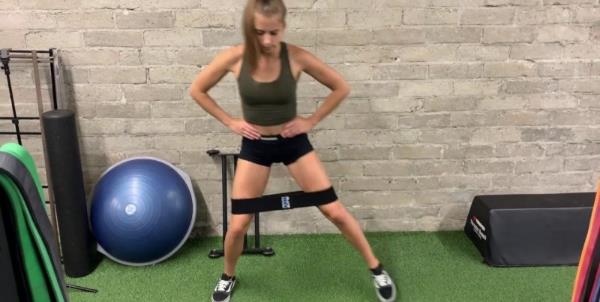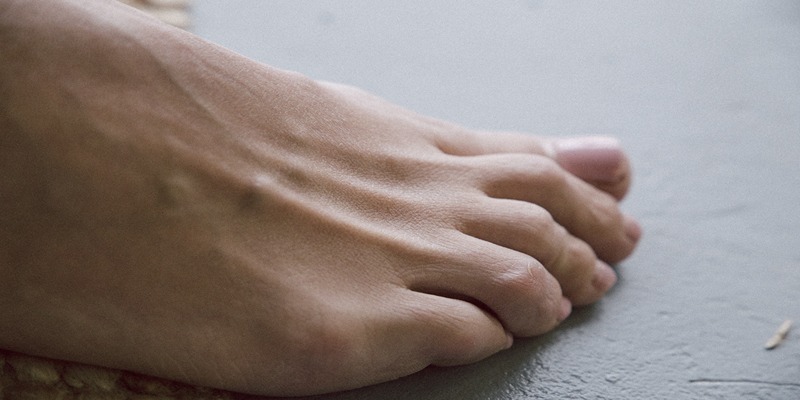When your life is so busy beyond measure that you don't get enough time to go to the gym, you look for exercises you can do at home. While many might say the effect is less profound than a proper gym workout, it can achieve the same results if done correctly.
Today’s article is about working out to strengthen your glutes with lateral band walks that work with any resistance band wrapped around your ankles. Let's start the article by discussing how a lateral band walk can enhance your balance and the benefits of using a resistance band side step routine at home.
What is The Lateral Band Walk Exercise?
The exercise is a simple workout routine where you sidestep a few steps on one side while a resistance band wraps around your ankle. You take a few steps on one side and then move to the opposite side to cover one rep. The resistance band side step combination adds resistance, pushing your muscles to work while sidestepping.
What Muscles are Involved in Lateral Band Walks?
The prime target for this exercise routine is your glutes, but it can also help strengthen your inner thighs, knee muscles, and calf to some extent. Lateral band walks are a good workout exercise that you can easily include in your overall routine.
Who Can Do This Exercise?
Anyone who wants to add stability to their body and gait and strengthen leg muscles. This exercise is perfect for individuals who wish to improve spine, knee, and hip stability. If you have any issues or injuries in any of these areas, please consult your doctor before beginning this routine.
How to Do the Lateral Band Walks?
Before we proceed to the step-by-step instructions, you must know a little bit about the core element of the routine, the Resistance Band. Being a beginner, you should start with the band that offers the least resistance; after some time, you can increase the resistance as you like. Following are the typical color codes for resistance bands:
Yellow – Good for beginners and is for the accessible mode.
Green – Gives moderate resistance and is excellent for those used for lateral band walks.
Blue – Harder resistance and for experienced individuals.
Black – The most challenging resistance level is paramount for those who are at the athlete level.

Remember that manufacturers might use different color coding, so visit their website to learn more before buying the band.
Here are the instructions to perform the lateral band walks properly.
Wrap around the resistance band around your ankles and ensure it isn't bent or bunched. Stand on the mat or grass while your feet are at shoulder-width length. Adjust your position based on the resistance level so your band is not stretched. Move inward to make it just about taut.
You need to activate your glute medius before you start; therefore, bend your knees to be in a half squat position like a horseback stance. While maintaining your stance, move one leg to one side while keeping weight on the other. As soon as your foot touches the ground, bring the other leg closer the same way.
Repeat the process for at least eight steps on one side, then repeat on the other to make it one rep. During all this activity, ensure your hip is always in the proper stance, and your back should be straight and not hunched.
Benefits of Lateral Band Walks
Let’s discuss the best benefits of this exercise.
Enhance the Stability of Hips and Knees: When you work out this way, the muscles around these parts will work hard against the resistance and become stronger. This routine will help enhance your performance and reduce the chances of injury.
Stronger Glutes: You want stronger glutes as they are one of the largest groups of muscles essential to standing, walking, and running. Strengthening these muscles contributes to better overall posture and reduces the risk of lower back discomfort.
Improved Abductor Muscles: If you are also here for the looks, this exercise routine will enhance that, too, giving you a more tuned shape. Furthermore, toned abductor muscles not only contribute to a sculpted appearance but also play a vital role in maintaining balance and stability.
Increased Range of Motion: The best part about these exercises is that they help improve your quality of life during walking, running, or errands. Your body has improved mobility because of the increased motion range for knees and hips.
Burn Calories: This is an excellent addition to your overall routine and helps burn calories if you do three sets of 8-12 reps. Moreover, it contributes to overall cardiovascular health, promoting a more balanced and energetic lifestyle.
Boosted Stamina: Furthermore, incorporating these exercises into your fitness regimen can enhance your stamina, enabling you to endure physical activities for longer durations. Whether it's a brisk walk, jogging, or engaging in various daily tasks, you'll notice increased endurance over time.
Enhanced Posture: Additionally, practicing these workouts contributes to better posture by strengthening your core muscles. As your core becomes more stable, you'll naturally maintain a more upright and balanced posture throughout your daily activities, promoting overall spinal health.

Final Words
As humans, we are meant to walk and run; our bodies aren't designed to sit in a chair all day. But due to the modern work routines, the longer you sit, the higher the chances of your muscles becoming stiff and having reduced strength.
Exercising to strengthen these muscle groups, especially the glutes, is essential, and Lateral band walks can help you with that. This exercise routine is quite simple and has many benefits to living a good, healthy life.







